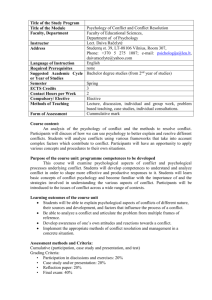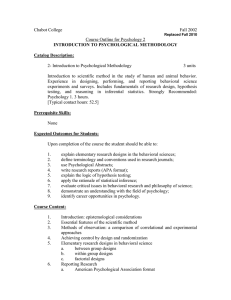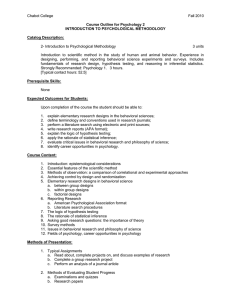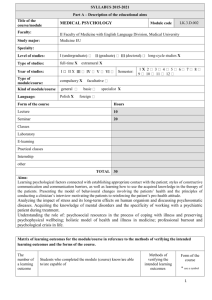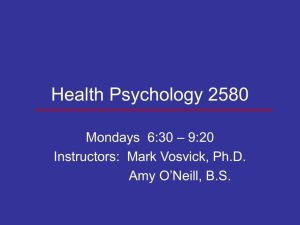Chapter 1 Introducing Health Psychology
advertisement
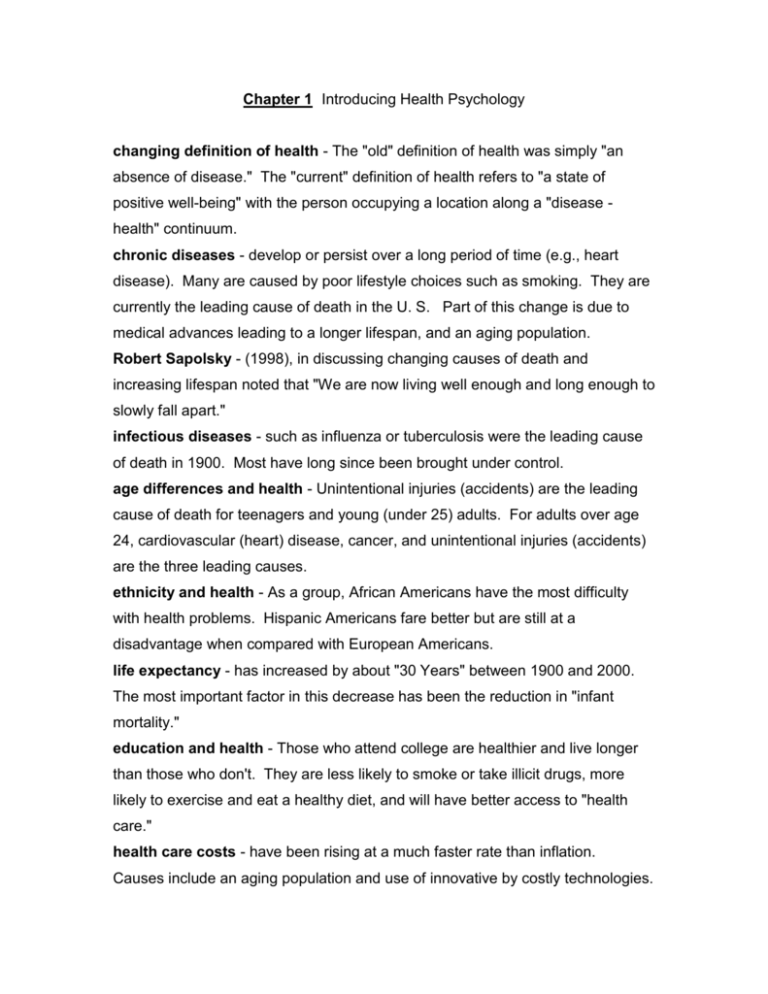
Chapter 1 Introducing Health Psychology changing definition of health - The "old" definition of health was simply "an absence of disease." The "current" definition of health refers to "a state of positive well-being" with the person occupying a location along a "disease health" continuum. chronic diseases - develop or persist over a long period of time (e.g., heart disease). Many are caused by poor lifestyle choices such as smoking. They are currently the leading cause of death in the U. S. Part of this change is due to medical advances leading to a longer lifespan, and an aging population. Robert Sapolsky - (1998), in discussing changing causes of death and increasing lifespan noted that "We are now living well enough and long enough to slowly fall apart." infectious diseases - such as influenza or tuberculosis were the leading cause of death in 1900. Most have long since been brought under control. age differences and health - Unintentional injuries (accidents) are the leading cause of death for teenagers and young (under 25) adults. For adults over age 24, cardiovascular (heart) disease, cancer, and unintentional injuries (accidents) are the three leading causes. ethnicity and health - As a group, African Americans have the most difficulty with health problems. Hispanic Americans fare better but are still at a disadvantage when compared with European Americans. life expectancy - has increased by about "30 Years" between 1900 and 2000. The most important factor in this decrease has been the reduction in "infant mortality." education and health - Those who attend college are healthier and live longer than those who don't. They are less likely to smoke or take illicit drugs, more likely to exercise and eat a healthy diet, and will have better access to "health care." health care costs - have been rising at a much faster rate than inflation. Causes include an aging population and use of innovative by costly technologies. To lower costs, we need early detection, healthier lifestyles, and illness preventing behaviors. biomedical model - The perspective that considers disease to result from exposure to specific disease-causing organisms (pathogens). pathogen - Any disease-causing organism (e.g., the AIDS virus). biopsychosocial model - The currently popular approach to health that recognizes the importance of biological, psychological, and social influences. positive psychology - A modern trend in psychology that focuses on psychological wellness (as opposed to disorder) is consistent with the views of health psychology. psychosomatic medicine - Approach that assumes there are direct psychological or emotional causes for physical illness. This grew out of Freud's idea that psychic conflict could be expressed in physical symptoms. It was a popular view in the early 1900s but is no longer widely accepted. behavioral medicine - is an "interdisciplinary" approach (includes physicians, nurses, psychologists, etc.) that seeks to apply both behavioral and biological science to the prevention, diagnosis, treatment, and rehabilitation of illness. health psychology - The goals are essentially the same as behavioral medicine. However, heath psychology is a "sub-discipline" of psychology and not interdisciplinary. APA division 38 - In 1978, the American Psychological Association recognized "health psychology" (APA division 38) as a distinct discipline.




